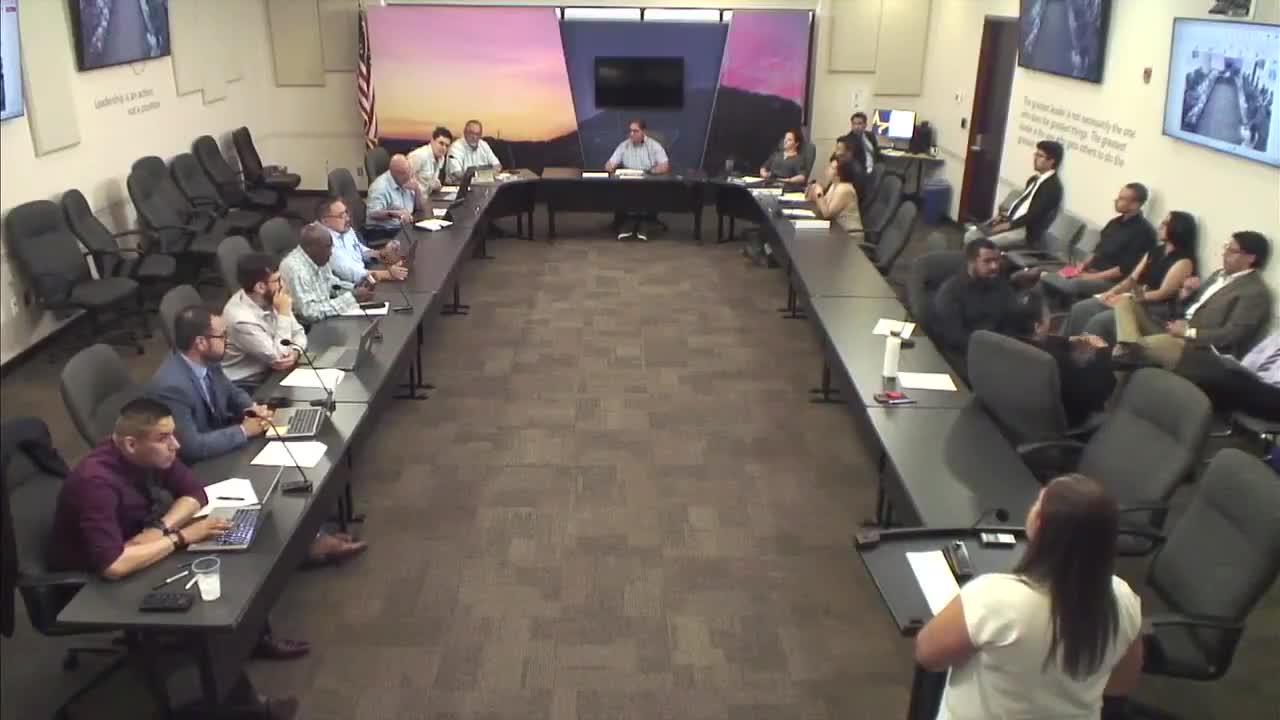City Commissioners approve Mission Ridge subdivision amidst walkability concerns
June 19, 2025 | El Paso City, El Paso County, Texas
Thanks to Scribe from Workplace AI , all articles about Texas are free for you to enjoy throughout 2025!

This article was created by AI using a video recording of the meeting. It summarizes the key points discussed, but for full details and context, please refer to the video of the full meeting. Link to Full Meeting
As discussions unfolded, a key point emerged: the challenge of creating truly walkable neighborhoods. One commissioner voiced concerns about a proposed subdivision, emphasizing that it lacked connections to essential amenities and infrastructure, which are vital for fostering a pedestrian-friendly environment. “It seems like it's not walkable. It's not connected to any other infrastructure,” the commissioner remarked, pointing to the sprawling nature of the development.

Before you scroll further...
Get access to the words and decisions of your elected officials for free!
Subscribe for FreeThe conversation shifted to the regulatory framework governing such developments. A representative clarified that while the subdivision must comply with state law, the absence of zoning in the county limits the city’s ability to enforce stricter standards. “If the subdivision complies with all core requirements, it has to be approved,” he explained, underscoring the legal obligations that guide their decisions.
Despite the challenges, some commissioners defended the area’s walkability, citing existing sidewalks and nearby parks. “I’ve cruised through them, and they are walkable,” one commissioner stated, highlighting the ongoing development that promises to enhance connectivity in the future. However, another commissioner countered, stressing that true walkability encompasses more than just sidewalks; it requires access to stores, parks, and public transport.
The debate culminated in a vote on the subdivision proposal. While the majority favored approval, two commissioners voted against it, reflecting the ongoing tension between development and community needs. “I’m going to use my voice and vote to deny it,” one commissioner stated, emphasizing the importance of aligning new developments with the city’s vision of reducing car dependency.
As the meeting concluded, the commission’s decision underscored a pivotal moment for El Paso’s growth. The discussions not only highlighted the complexities of urban planning but also the community's desire for a more interconnected and accessible city. With ongoing developments on the horizon, the future of walkability in El Paso remains a topic of vital importance, promising to shape the city’s landscape for years to come.
Converted from City Plan Commission 6/18/2025 meeting on June 19, 2025
Link to Full Meeting
Comments
View full meeting
This article is based on a recent meeting—watch the full video and explore the complete transcript for deeper insights into the discussion.
View full meeting




